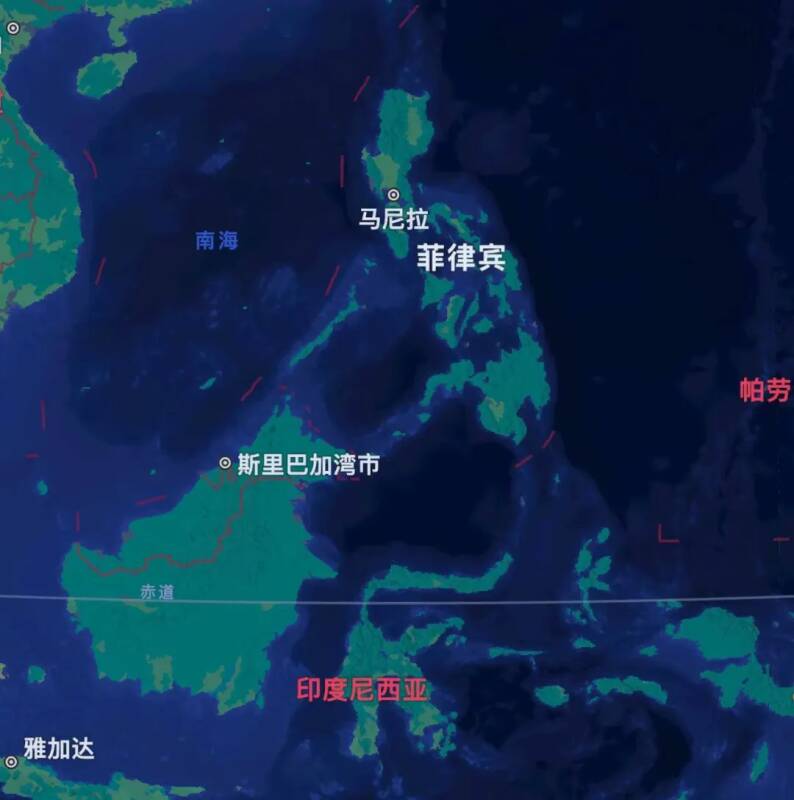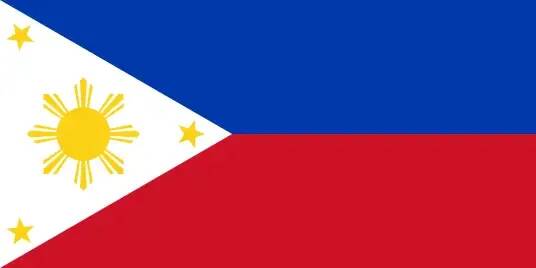Introduction of varieties grown in the coffee producing areas of the Philippines, an Asian coffee-producing country
When it comes to Asian coffee, many people will think of Indonesia, Vietnam and other countries. After all, Indonesia has the famous Mantenin coffee, while Vietnam is famous for being the second largest coffee producer in the world, so many people ignore the Philippines as a coffee producer.
Philippine Philippines
The Republic of the Philippines (Republic of the Philippines) is an island country located in southeastern Asia, consisting of more than 7000 islands, facing Taiwan Province of China in the north, the Sulawesi Sea and the Barabak Strait in the southwest, the South China Sea in the west and the Pacific Ocean in the east.

The Philippine flag is rectangular, with a white equilateral triangle on one side, a yellow sun radiating eight beams in the middle, and a yellow pentagram triangle on each of the three corners. On the right side of the flag is a right-angled trapezoid of red and blue, and the upper and lower positions of the two colors can be exchanged. Blue in peacetime, red in wartime. The sun and light patterns symbolize freedom; the eight longer beams represent the eight provinces that initially revolted for national liberation and independence, and the rest represent other provinces. The three five-pointed stars represent Luzon, Sama and Mindanao in the Philippines. Blue symbolizes loyalty, integrity, red symbolizes courage, and white symbolizes peace and purity.

The topography of the Philippines is mainly mountainous, accounting for more than 3x4 of the total area, with more than 200 volcanoes, of which 21 are active volcanoes. Except for a few islands with broad inland plains, most of the islands only have narrow plains scattered along the coast. The Mayon volcano in the southeast of Luzon is the largest active volcano, and the Apo volcano in the southeast of Mindanao is 2954 meters above sea level, the highest peak in the country.
Is a monsoon tropical rain forest climate, high temperature and rainy, high humidity, many typhoons. The average annual temperature is 27 ℃ and the annual precipitation is 2000,000mm. With volcanic soil, suitable climate and appropriate rainfall, Philippine agriculture is developed.
Coffee producing area
At present, most parts of the Philippines grow Robusta and Liberika coffee beans, while a few grow Arabica varieties. As the Philippines is made up of more than 7000 islands, it is mainly divided by some islands or land. The main producing areas are CordilleraAdministrative Region, Calabarzon, Mimaropa, Visayas and Mindanao. The harvest period is from October to March of the following year.
District of Cordillera (CordilleraAdministrative Region): located in the northern part of the island of Luzon (Luzon), this producing area is the only inland producing area and the highest in the Philippines, at an altitude of 1000-1800 meters. So Robusta will be planted here at low altitudes, while Arabica varieties such as bourbon, iron pickup, Kaddura and New World will be planted at high altitudes.
Karabadu (Calabarzon): the producing area is located southeast of the capital Manila, mostly at lower elevations, growing at 300-500m above sea level, mainly growing Robusta and Liberika varieties.
Minma Roba (Mimaropa): this area is composed of small islands in the southwest. Although the producing area has high mountains, coffee beans are grown in low elevations between 300m and 500m, mainly Robusta varieties.
Missouri Islands (Visayas): this area consists of many small islands, including Bohol Island, Negros islands Island, etc., with volcanic soil is very suitable for growing coffee, but not enough altitude, only 500-1000 meters, so mainly grow Robusta and Katim varieties.
Mindanao (Mindanao): the southernmost coffee growing region and the largest producing area in the Philippines, where nearly 70% of the trees are planted at an altitude of between 700 and 1200 meters, mainly planting Robusta varieties and Arabica varieties such as iron pickup and Katim.
Important Notice :
前街咖啡 FrontStreet Coffee has moved to new addredd:
FrontStreet Coffee Address: 315,Donghua East Road,GuangZhou
Tel:020 38364473
- Prev

War is coming! Ethiopian civil war threatens coffee and other industries
Recently, the Chinese Consulate in Ethiopia issued another notice that the current security situation in Ethiopia is still severe, reminding citizens and institutions already in Ethiopia and planning to travel to Ethiopia to understand local travel risk levels and safety warnings. Currently, the Ethiopian region is divided into 6 red (extremely high risk)
- Next

Shanghai coffee shops sell American style in oil drums! Netizen: Drink 5 liters and open your eyes until next week!
▲ Click to pay attention| Daily Boutique Coffee Culture Magazine Coffee Factory Today's consumers pay attention to cost-effectiveness when purchasing drinks, and working people hope to buy cheap and large quantities of "life-saving coffee." Therefore, coffee shop owners respond to customer needs and successively launch extra-large American cups, 1-liter American style, etc. But if
Related
- What is the standard process for the purpose of coffee cup testing? What is the difference between hand-brewed coffee and cup testing?
- How to use hand-brewed coffee paragon small golden balls? How does cold coffee lock in the aroma of coffee?
- Is American coffee black? What is the difference between American coffee and drip coffee?
- Unexpected! Well-known tea beverage brand Lele Tea will withdraw from the Zhengzhou market!
- Starbucks enters the fashion and beauty industry?! Netizen: Give me an ice American eye cream
- Why can American refills for free? The difference between Americano and American drip pot coffee
- Being chased out of the rain in front of Starbucks?! Store: Sheltering from rain under umbrellas poses a safety hazard
- The white moonlight has changed?! Lucky launches "Big Winter Pear American"
- Hand-brewed coffee three-stage method, high-sweet and universal brewing method to share! What does the high sweet water level of hand-brewed coffee mean?
- What is the difference between raw, refined and full espresso coffee? How to extract espresso and taste good?

